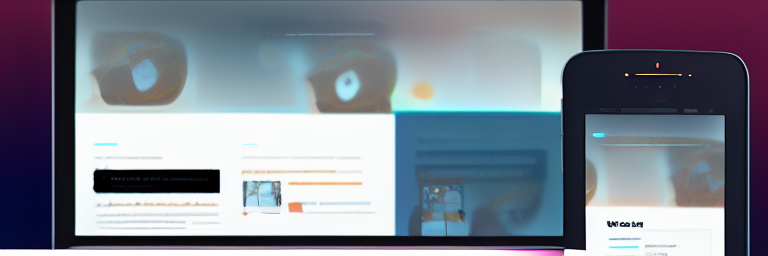Introduction to Progressive Web Applications
Progressive Web Applications (PWAs) are web applications that are designed to provide users with a more app–like experience when using their preferred web browser. PWAs combine the best of both native apps and traditional web applications, giving users the ability to access content and features quickly, even when using a less powerful device or with an unstable internet connection.
PWAs are designed to be fast, responsive, and secure. They are built to be reliable, meaning that they should load quickly, even on slower networks. They are also designed to be secure, meaning that they should be able to protect user data from malicious attacks and keep data safe. They are also designed to be engaging and engaging, meaning that they should be able to keep users engaged with their content even when they are disconnected from the internet.
In addition, PWAs can be installed on a user’s device, just like a native app. This allows users to access the content and features of the PWA even when they are offline. Finally, PWAs can be updated easily and quickly, meaning that they can keep up with the latest technologies and trends.
Overall, PWAs are a great way for businesses to engage with their users, provide them with a better user experience, and ensure that their content is secure and up to date.
Examples of Progressive Web Applications
A Progressive Web Application (PWA) is a web application that uses modern web technologies to provide a user experience similar to that of a native mobile application. It combines the best of web and mobile development to create a faster, more reliable, and more engaging user experience.
Examples of Progressive Web Applications include:
1. Flipkart Lite: Flipkart, India’s largest e–commerce platform, launched Flipkart Lite in 2016. It uses a Progressive Web Application to deliver a fast, reliable and engaging experience to its users. It uses a combination of technologies such as service workers, app shell architecture, and web push notifications to deliver a seamless experience to its users.
2. Twitter Lite: Twitter Lite is a Progressive Web Application (PWA) launched by Twitter in 2017. It uses modern web technologies to provide a fast and reliable experience to users. It uses technologies such as service workers, web push notifications, and app shell architecture to deliver an app–like experience.
3. Uber: Uber recently launched a Progressive Web Application. It uses modern web technologies to provide a faster, more reliable and more engaging experience to its users. It uses technologies such as service workers and web push notifications to deliver an app–like experience.
4. Pinterest: Pinterest launched its Progressive Web Application in 2016. It uses technologies such as service workers, app shell architecture and web push notifications to deliver an app–like experience to its users.
5. Airbnb: Airbnb launched its Progressive Web Application in 2017. It uses technologies such as service workers, app shell architecture and web push notifications to deliver an app–like experience to its users.
Progressive Web Application Considerations
Progressive Web Applications (PWAs) are web applications that are designed to deliver the same experience as a native mobile app and are becoming increasingly popular. When developing a PWA, there are several considerations that need to be taken into account.
The first consideration is the application’s user experience. PWAs should be designed to provide a smooth user experience that is consistent across all devices. This includes ensuring that the application is optimized for different screen sizes and ensuring that the application is responsive and fast–loading. Additionally, the application should be designed to be intuitive and easy to use.
Another consideration is the application’s performance. PWAs should be designed to be as efficient as possible, with an emphasis on loading quickly, utilizing caching, and minimizing network requests. Additionally, the application should be designed to be secure, with appropriate security measures in place.
Finally, the application should be designed to support offline access. This includes ensuring that the application is able to save data locally and that it is able to synchronize with the server when a connection is available. Additionally, the application should be designed to function even when the device is offline.
By taking these considerations into account, developers can ensure that their PWAs provide a great user experience and perform well.
Looking to the Future
The future of Progressive Web Applications looks very bright. PWAs are beginning to outperform native mobile apps in terms of user engagement, cost–effectiveness, speed, and scalability. PWAs have the potential to revolutionize the way businesses interact with their customers by providing an app–like experience that is accessible across all devices. With new features such as offline support, push notifications, and background sync, PWAs are becoming increasingly more powerful and user–friendly. As more businesses adopt PWAs, their potential to disrupt the mobile space is becoming increasingly apparent. In addition, the development of PWAs is becoming more efficient and cost–effective, making it possible for businesses of any size to take advantage of the technology.

